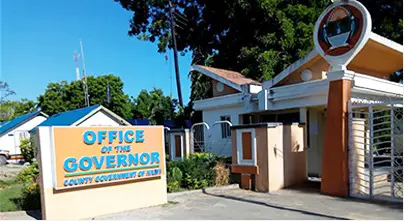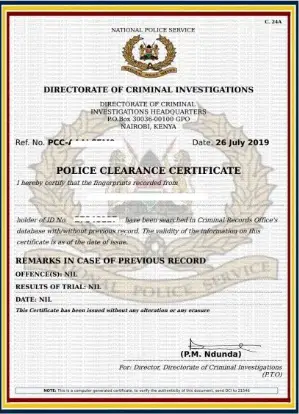Mandera county is divided into six sub-counties, which are further divided into 30 administrative wards. Each ward is represented by an elected Member of County Assembly (MCA) who serves as a representative of the people in the county assembly.
Mandera County is located in the northeastern region of Kenya and is bordered by Ethiopia to the north, Somalia to the east, and Wajir County to the southwest.
The county has a population of approximately 1.2 million people and covers an area of 25,939.8 square kilometers.
The six sub-counties in Mandera County are Mandera West, Mandera South, Banissa, Mandera North, Mandera East, and Lafey.
Each sub-county has its own unique characteristics and is further divided into several administrative wards.
Lafey Sub-County
Lafey is one of the six sub-counties in Mandera County. It is located in the northeast part of the country, at the international border with Somalia. The sub-county has a total of five wards, namely:
- Sala
- Fino
- Lafey
- Waranqara
- Alango Gof.
Lafey sub-county is predominantly inhabited by the Somali community, and the main economic activity is pastoralism. The sub-county is also home to several health facilities, including Lafey Sub-County Hospital, which serves as the main health facility in the area.
The sub-county has made significant strides in the education sector, with several schools established in the area. Some of the notable schools include Lafey Boys Primary School, Lafey Girls Primary School, and Waranqara Primary School.
In terms of infrastructure, Lafey sub-county has benefited from the government’s efforts to improve road networks in the area. The construction of the Lafey-Elwak road has significantly improved transport and communication in the sub-county.
Mandera South Sub-County
Mandera South Sub-County is one of the six sub-counties in Mandera County. It is located in the southern part of the county and covers an area of 5,948.1 square kilometers. The sub-county is further divided into five administrative wards, namely:
- Wargadou
- Kutulo
- Elwak South
- Elwak North
- Shimbir Fatuma.
The population of Mandera South Sub-County is estimated to be around 120,000 people, with the majority being pastoralists. The sub-county is known for its diverse culture and tradition, which is heavily influenced by the Somali community.
Wargadou Ward
Is the largest ward in Mandera South Sub-County, covering an area of 1,342.3 square kilometers. It is home to several villages, including Wargadud, Bula Mpya, and Bula Mpya Kusini. The ward is known for its vibrant market, which attracts traders from neighboring sub-counties.
Kutulo Ward
Is located in the eastern part of Mandera South Sub-County. It covers an area of 1,178.6 square kilometers and is home to several villages, including Kutulo, Dabacity, and Bula Barow. The ward is known for its rich history and culture, which is evident in its traditional dances and music.
Elwak South Ward
Is located in the southern part of Mandera South Sub-County. It covers an area of 1,104.8 square kilometers and is home to several villages, including Elwak, Galmagalla, and Bula Sheikh. The ward is known for its vibrant market, which is a hub for trade in the sub-county.
Elwak North Ward
Is located in the northern part of Mandera South Sub-County. It covers an area of 1,052.6 square kilometers and is home to several villages, including Elwak North, Bula Sheikh, and Bula Haji. The ward is known for its rich history and culture, which is evident in its traditional dances and music.
Shimbir Fatuma Ward
Is located in the western part of Mandera South Sub-County. It covers an area of 1,269.8 square kilometers and is home to several villages, including Shimbir Fatuma, Bula Gudud, and Bula Sheikh. The ward is known for its vibrant market, which is a hub for trade in the sub-county.
Mandera East Sub-County
Mandera East Sub-County is one of the six sub-counties in Mandera County. It borders Mandera North Sub-County to the north, Banissa Sub-County to the east, and Somalia to the south and east. Mandera East Sub-County has a total of five wards, namely:
- Arabia
- Libehia
- Khalalio
- Neboi
- Township.
The sub-county has a population of approximately 80,000 people, according to the 2019 Kenya Population and Housing Census. The majority of the population are ethnic Somalis, who are predominantly pastoralists. The sub-county is also home to a significant number of refugees who have fled the ongoing conflict in Somalia.
Mandera East Sub-County is predominantly arid and semi-arid, with limited rainfall throughout the year. The sub-county is characterized by vast plains, thorny bushes, and scattered trees. The sub-county’s economy is largely dependent on livestock rearing, with camels, goats, and sheep being the most common livestock.
The sub-county has several primary schools and a few secondary schools. The sub-county’s health sector is served by several health centers and dispensaries, which provide basic healthcare services to the residents. The sub-county is also served by a few private clinics and pharmacies.
In terms of infrastructure, the sub-county has a few tarmac roads and several murram roads that connect the sub-county’s major towns and villages. The sub-county is also served by a few telecommunication companies, which provide mobile phone services and internet connectivity to the residents.
Mandera North Sub-County
Mandera North Sub-County is one of the six sub-counties in Mandera County, Kenya. It is located in the northern part of the county and borders Ethiopia to the north and Rhamu Sub-County to the south.
The sub-county has a total of 5 wards, namely:
- Ashabito
- Guticha
- Marothile
- Rhamu
- Rhamu Ditmu.
Ashabito Ward
Is located in the eastern part of Mandera North Sub-County and has a population of about 12,000 people. The ward is predominantly inhabited by the Garre community, who are mainly pastoralists. The main economic activities in the ward are livestock keeping and trade.
Guticha Ward
Is located in the western part of Mandera North Sub-County and has a population of about 10,000 people. The ward is predominantly inhabited by the Degodia community, who are mainly pastoralists. The main economic activities in the ward are livestock keeping and trade.
Marothile Ward
Is located in the central part of Mandera North Sub-County and has a population of about 14,000 people. The ward is predominantly inhabited by the Garre community, who are mainly pastoralists. The main economic activities in the ward are livestock keeping and trade.
Rhamu Ward
Is located in the southern part of Mandera North Sub-County and has a population of about 13,000 people. The ward is predominantly inhabited by the Degodia community, who are mainly pastoralists. The main economic activities in the ward are livestock keeping and trade.
Rhamu Ditmu Ward
Is located in the northern part of Mandera North Sub-County and has a population of about 11,000 people. The ward is predominantly inhabited by the Degodia community, who are mainly pastoralists. The main economic activities in the ward are livestock keeping and trade.
Mandera West Sub-County
Mandera West is one of the six sub-counties in Mandera County. It covers an area of approximately 4,587.30 square kilometers and has a population of 161,702 people according to the 2019 census.
The sub-county is further divided into five wards, namely:
- Takaba South
- Takaba
- Lagsure
- Dandu
- Gither.
Takaba South ward
This is one of the wards in Mandera West Sub-County. It is located in the southern part of the sub-county and covers an area of approximately 1,016 square kilometers. The ward has a population of about 16,000 people and is mainly inhabited by the Borana community. The main economic activities in the ward are livestock keeping and small-scale trade.
Takaba ward
This is another ward in Mandera West Sub-County. It covers an area of approximately 1,112 square kilometers and has a population of about 30,000 people. The ward is mainly inhabited by the Gabra community and the main economic activities are livestock keeping and small-scale trade.
Lagsure ward
It is located in the northern part of Mandera West Sub-County. It covers an area of approximately 1,096 square kilometers and has a population of about 20,000 people. The ward is mainly inhabited by the Borana community and the main economic activities are livestock keeping and small-scale trade.
Dandu ward
This is located in the eastern part of Mandera West Sub-County. It covers an area of approximately 1,145 square kilometers and has a population of about 25,000 people. The ward is mainly inhabited by the Somali community and the main economic activities are livestock keeping and small-scale trade.
Gither ward
This is located in the western part of Mandera West Sub-County. It covers an area of approximately 1,218 square kilometers and has a population of about 20,000 people. The ward is mainly inhabited by the Borana community and the main economic activities are livestock keeping and small-scale trade.
Banissa Sub-County
Banissa is one of the six sub-counties in Mandera County. It covers an area of approximately 1,190 km² and has a population of around 72,000 people.
The sub-county is further divided into five administrative wards, namely:
- Banissa
- Derkhale
- Guba
- Malkamari
- Kiliwehiri.
Banissa town is the headquarters of the sub-county and serves as an important commercial center in the region. The town is located along the main road that connects Mandera town to Wajir town, and it is a major transit point for goods and people traveling between these two towns.
The sub-county is predominantly inhabited by the Somali community, who are largely pastoralists. Livestock rearing is the main economic activity in the area, with camels, goats, and sheep being the most common animals kept by the locals.
However, there has been a growing trend towards crop farming in recent years, with farmers in the area growing crops such as maize, beans, and sorghum.
In terms of infrastructure, Banissa sub-county has several primary schools and a few secondary schools. The sub-county also has a health center that provides basic healthcare services to the residents.
However, the area still faces several challenges, including poor road networks, inadequate water supply, and limited access to electricity.
Frequently Asked Questions
How many wards are in Mandera County?
Mandera County is divided into six sub-counties which are further divided into 30 administrative wards. Each sub-county has five wards.
What are the subcounties of Mandera County?
The six sub-counties of Mandera County are Mandera West, Mandera South, Banissa, Mandera North, Mandera East, and Lafey.
What is the population of Mandera County according to the 2019 census?
According to the 2019 census, the population of Mandera County was 867,457.
What are the demographics of Mandera County?
Mandera County is primarily inhabited by the Somali ethnic group. The majority of the population is Muslim and speaks Somali as their first language.
What is the largest clan in Mandera County?
The largest clan in Mandera County is the Ogaden clan, which is a sub-clan of the larger Somali clan.



